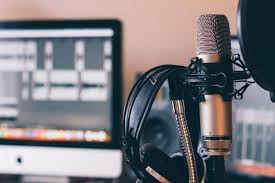Is it necessary to copyright music?
Contrary to popular belief, music copyright doesn’t require as much complexity as you might think.
Although the technicalities may vary from one country to another, the principle of copyrighting your song is the same: it is an essential step in protecting your music from theft and plagiarism.
It takes only a glance at the industry’s most important copyright dispute cases – Robin Thicke & Pharell Williams v. Marvin Gaye, Vanilla Ice vs. Queen. There have been recent battles with Coldplay and Lana Del Rey, too.
What lesson can we draw from these huge names?
Copyrighting your music allows you to have exclusive rights, no matter your current position in music.
– Distribute your music across all formats, digital and physical
– Create derivative works from your music.
– Perform your music live
That means there is no risk of “blurredlines.” (sorry)
Copyrighting music from the UK
Copyright is available in the UK when you create a physical version of your music in simple legal terms. From a handwritten lyric on a napkin to a sound recording on your Nokia brick, this could be anything.
Which types of music are subject to copyright?
Eligible to copyright:
Song lyrics
– Completed Works (eg. Songs, jingles and incidental music, symphonic works
Copyright not available:
Song titles
– Chord progressions
Unfinished or incomplete works
It is also possible to trademark the artist’s name if you have the right circumstances. This is a completely different story.
We now know the basics of copyright, its differences between countries, and what is up for grabs. Here are the five steps to get started copyrighting your music.
How to copyright music
Make a note of or record your music.
We know it sounds obvious.
The truth is that putting pen to paper, or sound to the record, is the first step to claiming your copyright to music, regardless of whether it’s a song or a symphony.
You can do as little as writing down the lyrics of your song on paper, taking a note of the melody in a manuscript, or using a digital device for a vocal or instrumental recording.
You can choose any method that suits you best, so long as the song is reproducible in some tangible format.
Why?
As we have already mentioned, it is automatically copyrighted once you’ve written the song down.
This seems simple, right?
Mmm, maybe a little too easy, if I may be so bold.
Although copyright protection is available from this point forward, there are a few additional steps that you can take to ensure that your music remains in your possession.
Make sure you have sufficient evidence to support your case.
Copyright is a time-related matter.
You can argue that copyright exists when a song or piece is written down. However, it’s more difficult to prove when a real copy was created.
This is particularly important in cases where there are potential disputes over your work’s originality or authorship. This is especially important in the case of any potential disputes about the ‘originality’ or ‘authorship’ of your work.
There are a variety of ways to get this proof.
One method is to upload a digital copy of your music or sheet to an online platform such as YouTube, SoundCloud, Facebook, or email the files. Online platforms will display the date and time of your upload. Your email will also show the date and when the audio was attached.
You can also deposit a copy of the song in writing or recording to a responsible person, such as an attorney or music legal representative, and receive a dated receipt.
The most well-known and historically popular method is posting a copy of the recording/manuscript via special delivery. Once it’s ready to be proofed, store it sealed in a safe place.
This method might sound old-fashioned, and it probably is. However, in the UK, this is still recommended to obtain copyright. PRS Music
This may seem to be a good idea for Brits, but US poor man’s copyright is no longer allowed.
You will need to register the copyright for your song via a formalized registration process.

